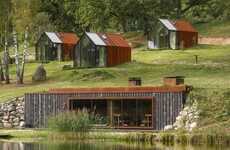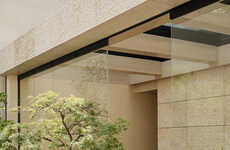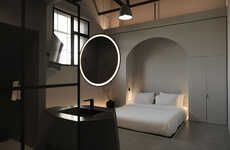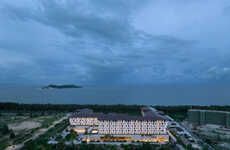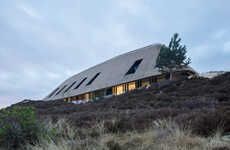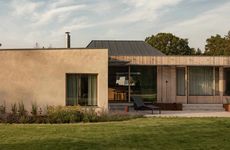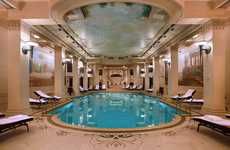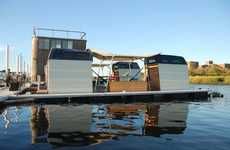
The Yasuragi Spa is Offering 27 New Rooms
Vasiliki Marapas — November 11, 2014 — Art & Design
Swedish architecture firm White Arkitekter designed a 27-room extension for the Yasuragi spa hotel, located just outside of Stockholm.
The architects punctuated the traditional Swedish architecture with Japanese influence, creating a beautifully serene hybrid design. The original building, which was designed by Yoji Kasajima, features concrete walls offset by timber cladding. White Arkitekter continued with a similar material palette, creating a cohesive transition between the older and newer spaces. The architects felt that the "clean, honest and timeless" properties of the raw concrete lended itself beautifully to the new design. Similarly, the interior continues to express Japanese sensibilities.
To optimize for the nearby views of the Höggarnsfjärden Bay, the extension was placed on top of the existing structure.
The architects punctuated the traditional Swedish architecture with Japanese influence, creating a beautifully serene hybrid design. The original building, which was designed by Yoji Kasajima, features concrete walls offset by timber cladding. White Arkitekter continued with a similar material palette, creating a cohesive transition between the older and newer spaces. The architects felt that the "clean, honest and timeless" properties of the raw concrete lended itself beautifully to the new design. Similarly, the interior continues to express Japanese sensibilities.
To optimize for the nearby views of the Höggarnsfjärden Bay, the extension was placed on top of the existing structure.
Trend Themes
1. Swedish-japanese Fusion Design - The combination of Swedish and Japanese architectural influences presents an opportunity for businesses to create unique and harmonious designs that appeal to a global audience.
2. Minimalist Spa Experiences - The minimalist design approach seen in Swedish spas opens doors for businesses to create serene and calming environments, providing customers with a peaceful escape from their busy lives.
3. Optimizing Natural Views - The emphasis on optimizing nearby natural views in spa designs presents an opportunity for businesses to incorporate nature-centric elements into their own projects, enhancing the overall experience for customers.
Industry Implications
1. Architecture and Interior Design - Architects and interior designers can explore the Swedish-Japanese fusion design trend to create innovative and captivating spaces for hotels, spas, and various other establishments.
2. Hospitality and Tourism - The minimalist spa experience trend offers opportunities for hotels and resorts to differentiate themselves by offering guests a tranquil and minimalist retreat, attracting wellness-minded travelers.
3. Sustainable Tourism - The focus on optimizing natural views in spa designs aligns with the goal of sustainable tourism, allowing businesses to enhance the guest experience while preserving the surrounding environment.
2
Score
Popularity
Activity
Freshness

